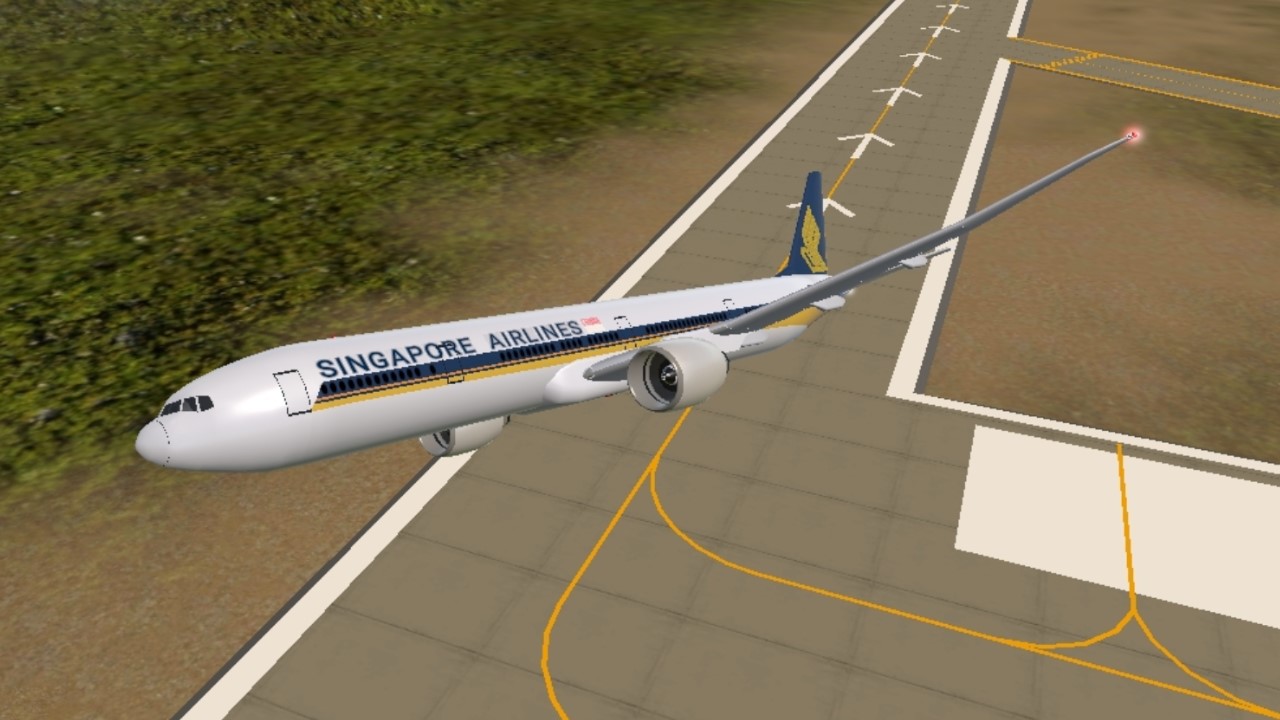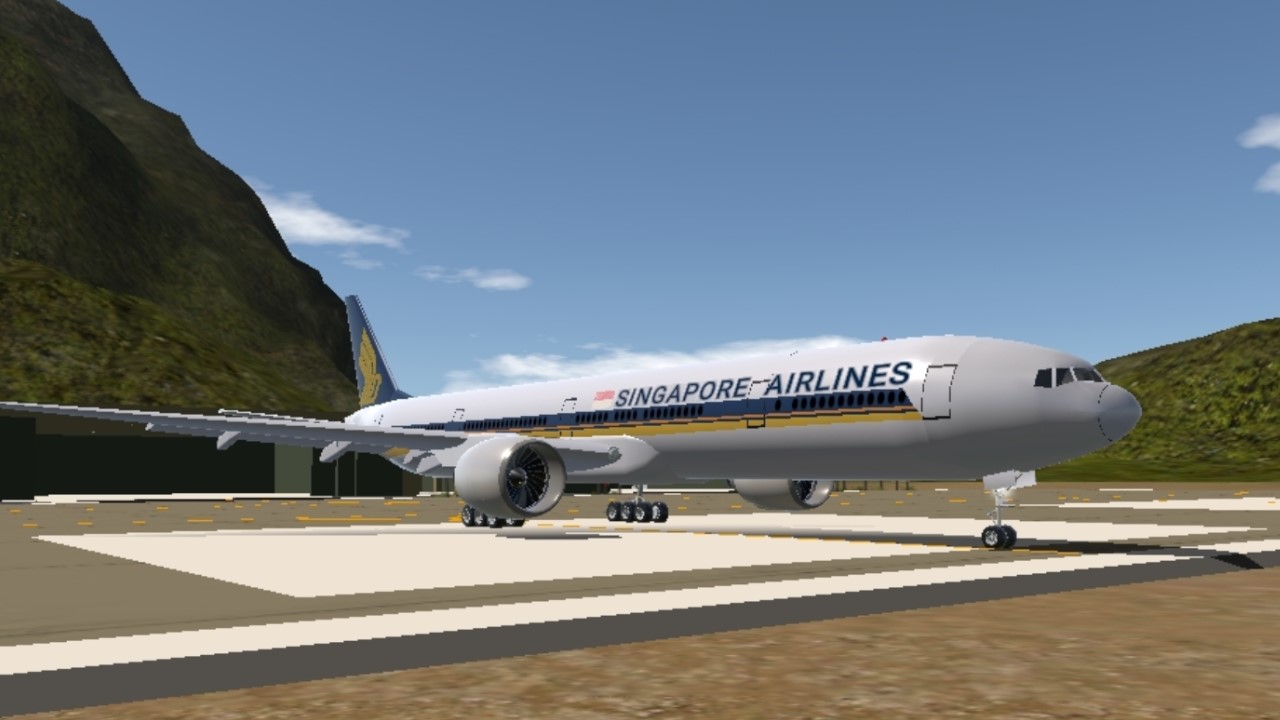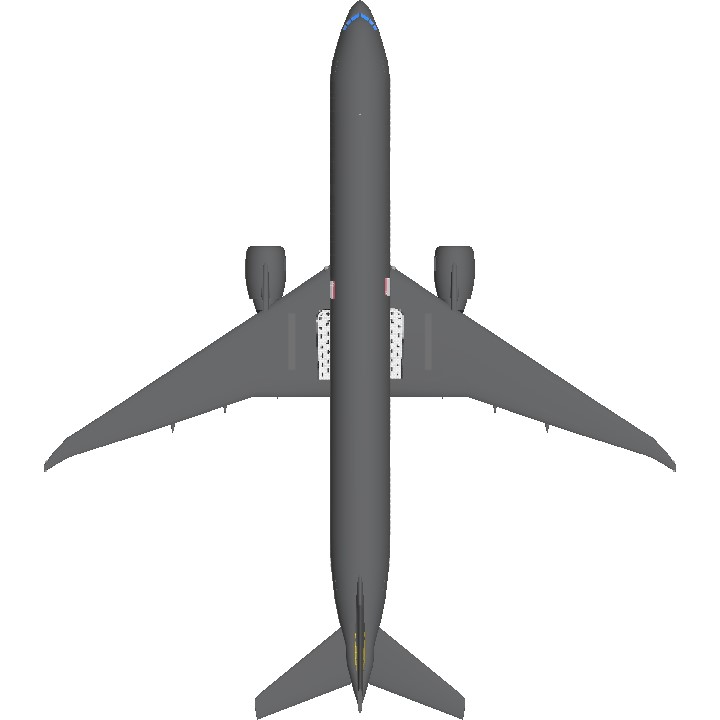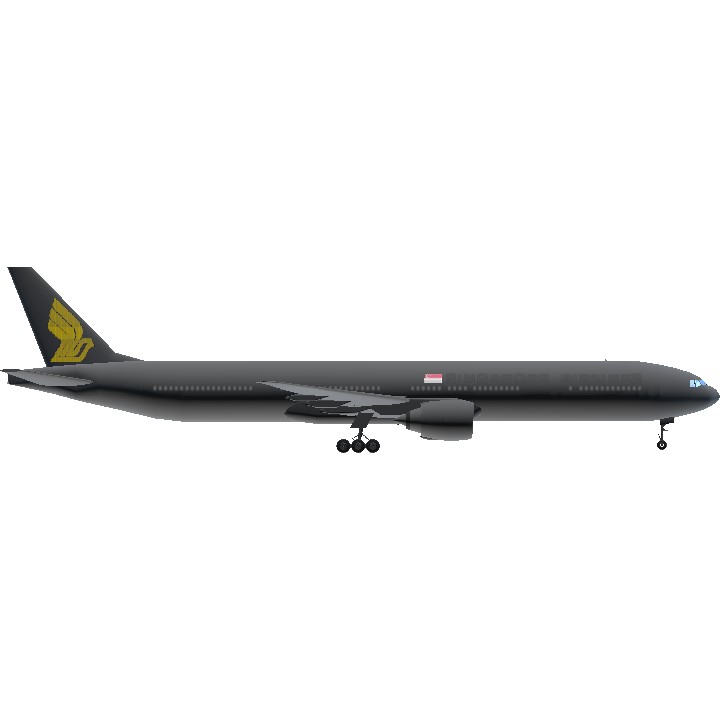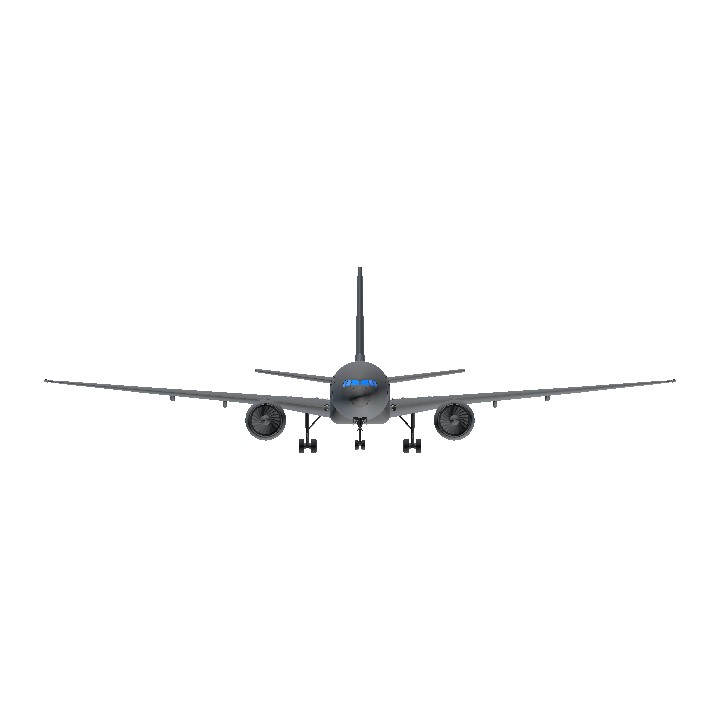The Boeing 777, commonly referred to as the Triple Seven, is an American long-range wide-body airliner developed and manufactured by Boeing Commercial Airplanes. The 777 is the world's largest twinjet and the most-built wide-body airliner. The jetliner was designed to bridge the gap between Boeing's other wide body airplanes, the twin-engined 767 and quad-engined 747, and to replace aging DC-10 and L-1011 trijets. Developed in consultation with eight major airlines, the 777 program was launched in October 1990, with an order from United Airlines. The prototype aircraft rolled out in April 1994, and first flew in June of that year. The 777 entered service with the launch operator United Airlines in June 1995. Longer-range variants were launched in 2000, and first delivered in 2004.
The 777-300ER ("ER" for Extended Range) is the B-market version of the -300. Its higher MTOW and increased fuel capacity permits a maximum range of 7,370 nautical miles (13,650 km; 8,480 mi) with 392 passengers in a two-class seating arrangement.[187] The 777-300ER features extended raked wingtips, a strengthened fuselage and wings and a modified main landing gear.[209] Its wings have an aspect ratio of 9.0.[210] It is powered by the GE90-115B turbofan, the world's most powerful jet engine with a maximum thrust of 115,300 lbf (513 kN).[211]
Following flight testing, aerodynamic refinements have reduced fuel burn by an additional 1.4%.[107][212] At Mach 0.839 (495 kn; 916 km/h), FL300, -59 °C and at a 513,400 lb (232.9 t) weight, it burns 17,300 lb (7.8 t) of fuel per hour. Its operating empty weight is 371,600 lb (168.6 t).[213] The projected operational empty weight is 371,610 lb (168,560 kg) in airline configuration, at a weight of 477,010 lb (216,370 kg) and FL350, total fuel flow is 15,000 lb/h (6,790 kg/h) at Mach 0.84 (495 kn; 917 km/h), rising to 19,600 lb/h (8,890 kg/h) at Mach 0.87 (513 kn; 950 km/h).[214]
Since its launch, the -300ER has been a primary driver of the airplane's sales past the rival A330/340 series.[215] Its direct competitors have included the Airbus A340-600 and the A350-1000.[80] Using two engines produces a typical operating cost advantage of around 8–9% for the -300ER over the A340-600.[216] Several airlines have acquired the -300ER as a 747-400 replacement amid rising fuel prices given its 20% fuel burn advantage.[81] The -300ER has an operating cost of $44 per seat hour, compared to an Airbus A380's roughly $50 per seat hour and $90 per seat hour for a Boeing 747-400 as of 2015.[217]
The first 777-300ER was delivered to Air France on April 29, 2004. [218][219] The -300ER is the best-selling 777 variant, having surpassed the -200ER in orders in 2010 and deliveries in 2013.[2] As of 2018, 784 300ERs were in service,[183] A total of 831 were built with the last delivered to Aeroflot in 2021.
Ag1 - Arm Speed brakes (requires gear down)
Ag2-4 - Strobe/Landing/Cabin Lights
Ag5 - Open front left door (Requires not moving)
AG6 - Pushback
AG8 - Engines, Nav/Taxi/Beacon lights
De-activating 8 will cut power to all lights
optional: all 4 Forward doors can open(just connect them to the pistons)
Landing
Approach speed: 120-125 knots
VTOL(flaps): 100%
Trim: 25-50%
Gear: down
AG1: Activated(helps negate bouncy landings)
Cruise:
Cruise speed: mach.0.84(482 knots)-TAS
Max operating speed: Mach 0.89(511 knots) - TAS
optional:
No more than 250 knots below 10,000ft - IAS as per regulations
Specifications
General Characteristics
- Predecessor [Updated]B777-300ER
- Created On Android
- Wingspan 212.6ft (64.8m)
- Length 242.3ft (73.8m)
- Height 62.6ft (19.1m)
- Empty Weight N/A
- Loaded Weight 121,851lbs (55,270kg)
Performance
- Power/Weight Ratio 0.623
- Horse Power/Weight Ratio 0.049
- Wing Loading 22.0lbs/ft2 (107.2kg/m2)
- Wing Area 5,547.8ft2 (515.4m2)
- Drag Points 16508
Parts
- Number of Parts 524
- Control Surfaces 11
- Performance Cost 2,661

